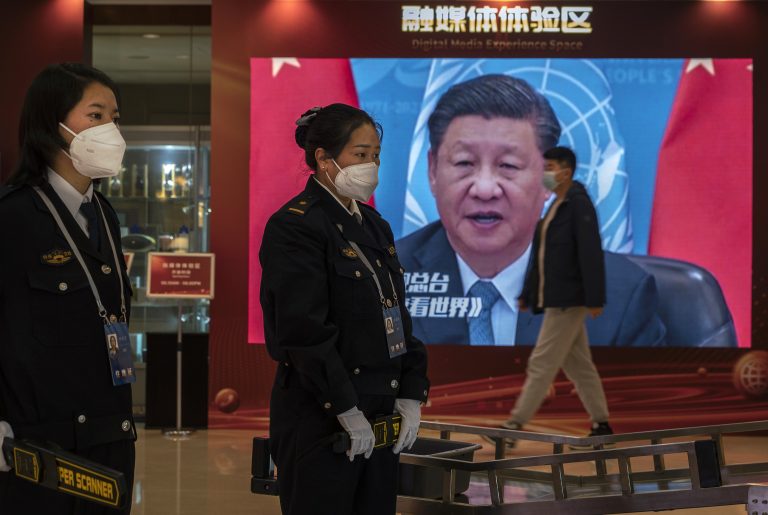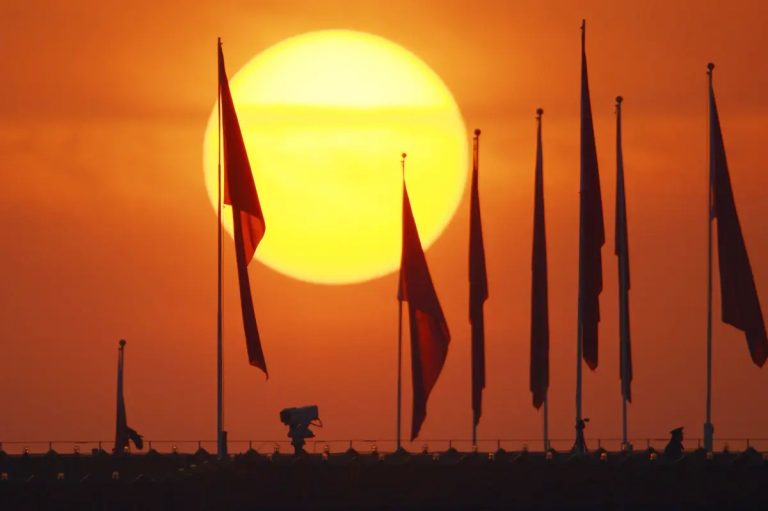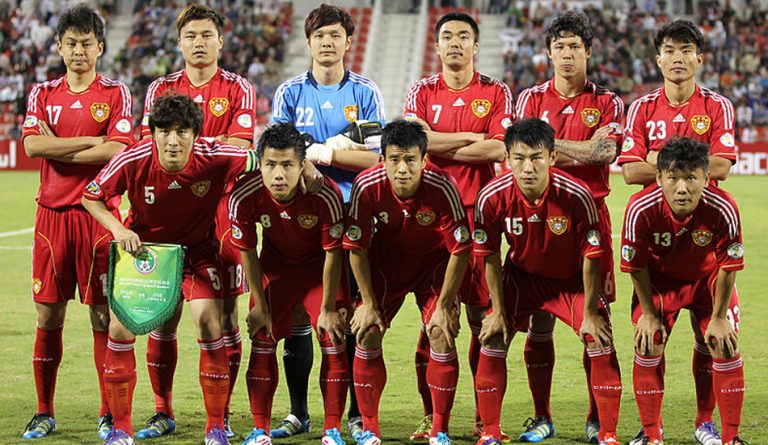At the 20th Congress of the Chinese Communist Party (CCP) this October, general secretary Xi Jinping urged officials to be “unwavering” in implementing his “zero-COVID” policy. His statements led many observers to conclude that the People’s Republic of China (PRC) was unlikely to budge from lockdowns and other draconian epidemic prevention and control measures any time soon.
Beijing, however, had made gestures suggesting that it was looking to ease pandemic restrictions after the 20th Party Congress. Since then, the Xi leadership has been making more obvious efforts at relaxing COVID-19 controls even as cases ticked up in Guangzhou city and other parts of China.
Beijing has few options but to gradually move away from “zero-COVID” as it endeavors to rescue the Chinese economy and step up efforts at diplomatic rapprochement. But even as the Xi leadership attempts to pull back from its ruinous pandemic measures, it faces significant obstacles in large part due to the deficiencies of the CCP system.
POLITICS IN CHINA
- Reading the Results of China’s 20th Party Congress
- Biden Pledges Cooperation Alongside Competition After 3-Hour Meeting With China’s Xi
- China Fights Uphill Battle to Rescue Its Economy While Keeping ‘Zero-COVID’
Early signs
Analysts who closely parse official CCP documents for clues on policy direction sometimes neglect to account for mundane activities or statements that are just as useful in discerning what Beijing might be up to.
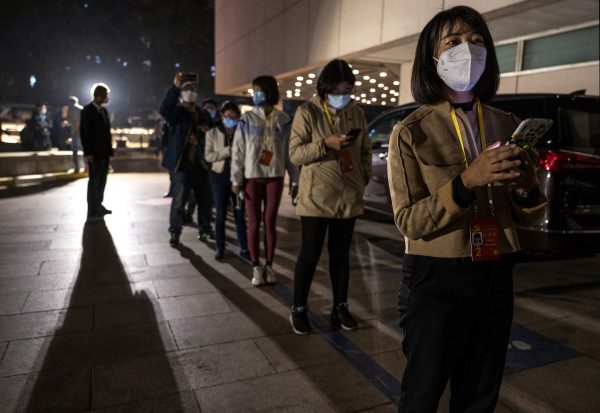
The astute China-watcher would have noticed that the CCP authorities had in early October approved some mass sporting events that were scheduled to take place after the 20th Party Congress. Examples include the Beijing Marathon, which took place on Nov. 6 after a two-year hiatus and saw 30,000 participants, as well as the badminton World Tour finals in mid-December. The approval of those sporting events signaled an easing of “zero-COVID,” which we noted at the time in a newsletter to our subscribers.
Success
You are now signed up for our newsletter
Success
Check your email to complete sign up
Another sign that Beijing was serious about reopening China came during the 20th Party Congress period. On Oct. 18, mainland media reported that China Eastern Airlines, China Southern Airlines, and several other airlines had announced the opening and resumption of some international flights at the end of October.
After the 20th Party Congress, the CCP began “leaking” to Western media outlets information which suggested that an easing of “zero-COVID” was on the horizon.
- China’s ‘Strategic Partnership’ With Russia Is a Growing Liability for Xi
- Xi Is Not the Next ‘Chairman Mao’
- CCP’s Beijing Winter Olympics Propaganda Fest Marred by Controversy
- ‘Unified National Market’ Push Exposes Steep Challenge of Reforming China’s Economy
On Nov. 4, Bloomberg News reported that the PRC State Council has asked the Civil Aviation Administration of China and other government agencies to prepare for the ending of the “circuit-breaker mechanism” meant to curb the spread of COVID-19 via airlines, citing people familiar with the matter. Bloomberg added that the request was part of a three-step plan to “normalize” China’s aviation industry, and that the first step of increasing the number of flights into the mainland was already underway.
On Nov. 7, The Wall Street Journal reported that CCP leaders are considering reopening steps. “The reopening in China will be carried out in an orderly manner. It will start gradually depending on the geographic areas and sectors, and it will be different from what we’ve seen in the West,” a person involved in discussions told the Journal. Beijing is planning to boost elderly vaccination rate and access to oral antivirals to treat COVID-19 before considering a full opening up of the economy.
Beijing is also looking at whether the World Health Organization (WHO) downgrades the pandemic alert level before pushing for “more aggressive easing measures and adjust[ing] the domestic narrative on COVID-19.” However, Beijing is taking a cautious approach to easing “zero-COVID” because it is weighing “the potential costs of reopening for public health and support for the Communist Party,” according to the Journal.
‘Optimizing’ prevention and control
The Xi leadership gave a clear signal about its “zero-COVID” intentions during a Politburo Standing Committee meeting on Nov. 10. The meeting heard a report on the regime’s COVID-19 response, as well as discussed and arranged twenty measures to further “optimize epidemic prevention and control work.”

The meeting called for “maximizing the protection of people’s lives and health, and minimizing the impact of the epidemic on economic and social development.” Officials were urged to “resolutely put into practice the general strategy of ‘preventing both imported cases and domestic resurgences’ and firmly pursue the general policy of ‘dynamic zero-COVID.’” Officials were further instructed to “efficiently coordinate COVID-19 prevention efforts with economic and social development” to ensure “effective response to the epidemic, economic stability, and secure development.”
The Politburo Standing Committee meeting called for “further optimizing and adjusting epidemic prevention and control measures” while not slackening measures that are imperative. Officials should “oppose a lack of responsibility,” as well as “oppose and overcome pointless formalities and bureaucratism, and redress undesirable practices, such as taking excessive policy steps or resorting to ‘one-size-fits-all’ approaches.” Officials were also told to “take substantial measures to meet the people’s basic living needs and ensure medical service and other basic services that concern their wellbeing,” including medical treatment.
On Nov. 12, PRC National Health Commission spokesperson Mi Feng said at a State Council press conference that the twenty “optimization” measures represent an “improvement” to the ninth version of CCP’s epidemic prevention and control plan. He added that the measures do not represent a relaxation of prevention and control measures or “liberalization” and “laying flat” on “zero-COVID,” but are meant to “further enhance the scientific nature and precision of epidemic prevention and control measures.”
On Nov. 18, the PRC Ministry of Culture and Tourism issued five guidelines for epidemic prevention and control work at tourist markets, internet cafes, entertainment venues, theaters and other performance venues, and murder mystery game business venues. Among the guidelines include scrapping arbitrary lockdowns and the removal of lockdowns when conditions permit, as well as not limiting the number of people at the aforementioned places in places without outbreaks.
Concurrently, Party mouthpiece People’s Daily and other official media published a number of commentary articles promoting and explaining the twenty “optimization” measures. This propaganda effort, Mi Feng’s comments, the Ministry of Culture and Tourism’s five guidelines, and the twenty measures indicate that Beijing is serious about gradually easing “zero-COVID,” and wants the officialdom to take heed and act accordingly.
Beijing’s statements that the “zero-COVID” policy will be kept on the books appears as a face-saving measure, likely intended to bolster Xi Jinping’s political legacy by affirming the “correctness” of his leadership. However, because they seemingly “contradict” the twenty measures and other indications that China is opening up, such statements also add an element of confusion as to whether the regime is genuinely moving away from “zero-COVID.”
New ‘political correctness’
Some local governments were quick to recognize that change is in the air. The municipal government of Shijiazhuang in northern China’s Hebei Province issued an open letter to local residents regarding Beijing’s twenty measures to further “optimize” epidemic prevention and control work on Nov. 13. The letter cautioned against arbitrarily extending and expanding the scope of lockdowns, adding that such incidents “must be promptly investigated and dealt with seriously, and rectified well.”

A day after the letter was published, Shijiazhuang Party secretary Zhang Chaochao announced that the local government will “resolutely manage what should be managed and let go of what should be released.” Mainland media reported that the local government organized the return of risk-free people to schools, closed free nucleic acid testing sites in the city, and ceased requiring that those taking public transportation or entering public places produce a negative nucleic acid test certificate soon after the twenty measures were announced.
However, the Shijiazhuang authorities just as quickly reverted to form, reopening nucleic acid test sites throughout the city again on Nov. 15.
Five days later, the city of 11 million reintroduced a series of strict controls, including banning residents living in high-risk areas from leaving their homes and requiring those in other areas stay home “in principle,” implementing mass testing for five days in six of Shijiazhuang’s districts, suspending non-essential businesses, and again requiring that airports, bus stations, and other transportation stations strictly check for negative 48-hour nucleic acid test certificates.
The situation in Shijiazhuang serves as a demonstration of weaknesses inherent to the CCP’s authoritarian system — the Party’s brute-force, “dare to struggle” approach to policy does not lend itself to careful administration, leading instead to confusion and engenders new risks as officials go to extremes or display incompetence in adhering to the new “political correctness.”
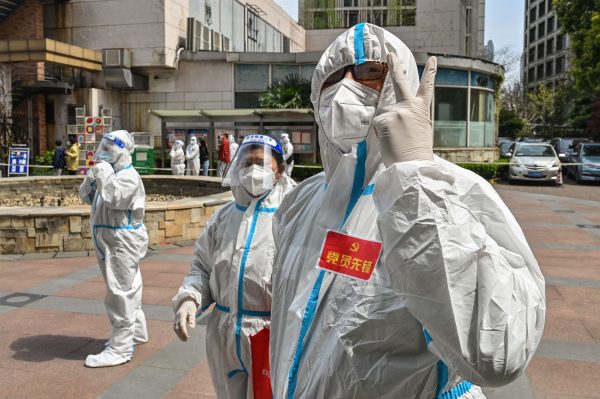
- ‘Zero-COVID’ Lockdown in Shanghai Compounds Xi’s Political Dilemma
- In Leaked Recording, Elite Chinese Scholar Laments Crippling Dysfunction of Communist Regime
- Communist Politics Are Bringing Disaster to China–And Xi Jinping
Some local governments, like the Shijiazhuang authorities, will flip-flop between relaxing “zero-COVID” restrictions on day and tightening them days later. Others could go overboard in easing prevention and control measures, leading to serious outbreaks and cover-ups. Still others will not ease restrictions at all, citing “outbreaks” as an excuse while causing more local economic stagnation and broader supply chain problems depending on the area.
Another challenge to smoothly easing out of “zero-COVID” that stems from the CCP’s political culture is the likelihood of officials at various levels engaging in passive resistance to directives from Beijing should they feel their interests threatened or careers at stake. As the Chinese saying goes, whenever Party Central comes up with policy measures, local officials will respond with countermeasures.
For example, the large amounts of funds required to maintain extensive nucleic acid testing, epidemic control checkpoints, and other services related to enforcing “zero-COVID” may have resulted in a “Cobra effect” among government officials and cadres throughout China. Having benefited from the opportunities for illicit profits, these individuals would be reluctant to do away with “zero-COVID” despite Xi and the Politburo’s shifting line on the policy.
Thus, municipal and other local authorities could drag their feet in “optimizing” epidemic prevention and control, willfully misinterpret, or find other ways to avoid properly implementing Beijing’s twenty measures and other directives. Self-serving officials — part and parcel in the CCP’s “the Party leads everything” attitude on law and governance — will very likely hamper the regime’s efforts to resuscitate the economy and placate the increasingly protest-prone Chinese people.
Haphazard reopening of mainland China’s cities and markets would also have international repercussions and negatively impact Beijing’s efforts to court foreign investors back to the PRC. Confusion over Xi’s true stance on “zero-COVID” would accelerate capital outflows and worsen China’s economic conditions, making it harder for the Xi leadership to boost the regime’s finances and turn around a Chinese economy in sharp decline.
Beijing evidently wants to ease “zero-COVID” to give the Party opportunities to survive the various crises “unseen in a century” — be they economic, social, diplomatic, environmental — to rebuild its strength for maintaining dominance at home and creating hegemony abroad. But if Xi in implementing his policies cannot overcome systemic problems like those of “orders not leaving Zhongnanhai,” officials “preferring left rather than right,” or functionaries’ “one-size-fits-all” approaches, then the regime will remain susceptible to Black Swan events and other chaos should the many difficulties facing China boil over into popular unrest and intra-CCP factional struggle.
Larry Ong is a senior analyst with New York-based political risk consultancy SinoInsider. He was part of the SinoInsider team that forecasted the 19th Party Congress and 2018 Two Sessions personnel reshuffles with a high degree of accuracy.



